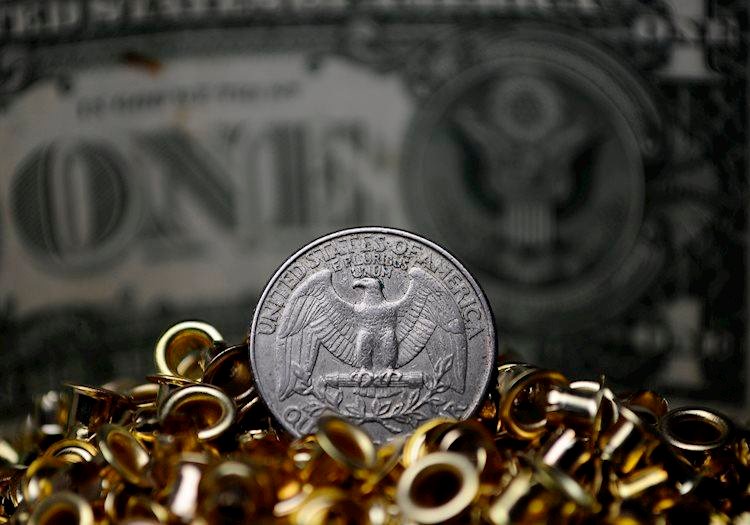- The DXY index falls below 103.00 as US producer price index figures disappoint.
- US economic growth continues to trend higher, suggesting that markets may be overestimating aggressive easing requirements.
- CPI is now in focus for a clearer inflation outlook.
On Tuesday, the US dollar (USD), as measured by the US Dollar Index (DXY), showed a slight decline and fell below the 103.00 level. This decline followed disappointing producer price index (PPI) figures, which missed analysts’ estimates.
By all economic data, the US economy continues to grow above trend, suggesting that market participants may be overestimating the need for aggressive monetary easing as the Federal Reserve (Fed) may require more data before cutting rates.
Daily roundup of key market moves: Slight decline follows disappointing PPI figures
- The US producer price index (PPI) for final demand showed a year-on-year increase of 2.2% in July, lower than the market expectation of 2.3%.
- The annualized core PPI also rose 2.4%, below the 2.7% increase estimated by analysts.
- On a monthly basis, the PPI registered an increase of 0.1%, while the core PPI remained stable.
- For now, a 50 basis point cut is possible, but it will depend entirely on the data, as the current probability is around 55%. The market continues to expect a 100 basis point easing by the end of the year and a total cut of 175-200 basis points over the next 12 months.
- This rate path seems unlikely unless the US economy enters a severe recession.
DXY Index Technical Outlook: Bearish Trends Continue Amid Weak Buying Efforts
There is no significant change in the technical outlook for the DXY index, considering the moderate selling pressure. The momentum-based Relative Strength Index (RSI) remains stable below the 50 mark, indicating a sustained selling approach. The Moving Average Convergence Divergence (MACD) continues to show negative values as the red bars stabilize, demonstrating continued bearish activity despite the market’s flat movement on Tuesday.
The index is positioned below the 20-, 100- and 200-day simple moving averages (SMA), which indicates a predominantly bearish trend.
Support levels: 102.80, 102.50, 102.20
Resistance levels: 103.00, 103.50, 104.00
Frequently Asked Questions about Central Banks
Central banks have a key mandate: to ensure price stability in a country or region. Economies constantly face inflation or deflation when prices for certain goods and services fluctuate. Constantly increasing prices for the same goods means inflation, and constantly decreasing prices for the same goods means deflation. The central bank’s task is to keep demand in check by adjusting its monetary policy rate. For larger central banks, such as the US Federal Reserve (FED), the European Central Bank (ECB) or the Bank of England (BoE), the mandate is to keep inflation close to 2%.
A central bank has one important tool at its disposal to increase or decrease inflation, and that is to adjust its reference policy rate, commonly known as the interest rate. At pre-announced times, the central bank will issue a statement with its policy rate and provide additional reasons as to why it is maintaining or changing it (cutting or raising it). Local banks will adjust their savings and lending rates accordingly, which in turn will make it harder or easier for individuals to make a profit on their savings or for businesses to get loans and make investments in their businesses. When the central bank increases interest rates substantially, this is called monetary tightening. When it is lowering its reference rate, it is called monetary easing.
A central bank is usually politically independent. Members of the central bank’s policy board go through a series of panels and hearings before being appointed to a position on the policy board. Each member of that board often has some conviction about how the central bank should control inflation and subsequent monetary policy. Members who want very loose monetary policy, with low rates and cheap borrowing, to boost the economy substantially while being content to see inflation slightly above 2%, are called “doves.” Members who prefer to see higher rates to reward savings and want to keep inflation in check at all times are called “hawks,” and they will not rest until inflation is at or just below 2%.
Typically, there is a chairman who leads each meeting, who must build consensus between hawks and doves and who has the final say when a split vote is reached to avoid a 50-50 tie on whether to adjust current policy. The chairman will deliver speeches that can often be followed live, in which the current monetary stance and outlook is communicated. A central bank will try to push its monetary policy forward without causing wild swings in rates, stocks, or its currency. All central bank members will channel their stance to the markets before a policy meeting event. A few days before a policy meeting is held and until the new policy has been communicated, members are prohibited from speaking publicly. This is called the blackout period.
#dollar #weakens #markets #await #CPI #figures
